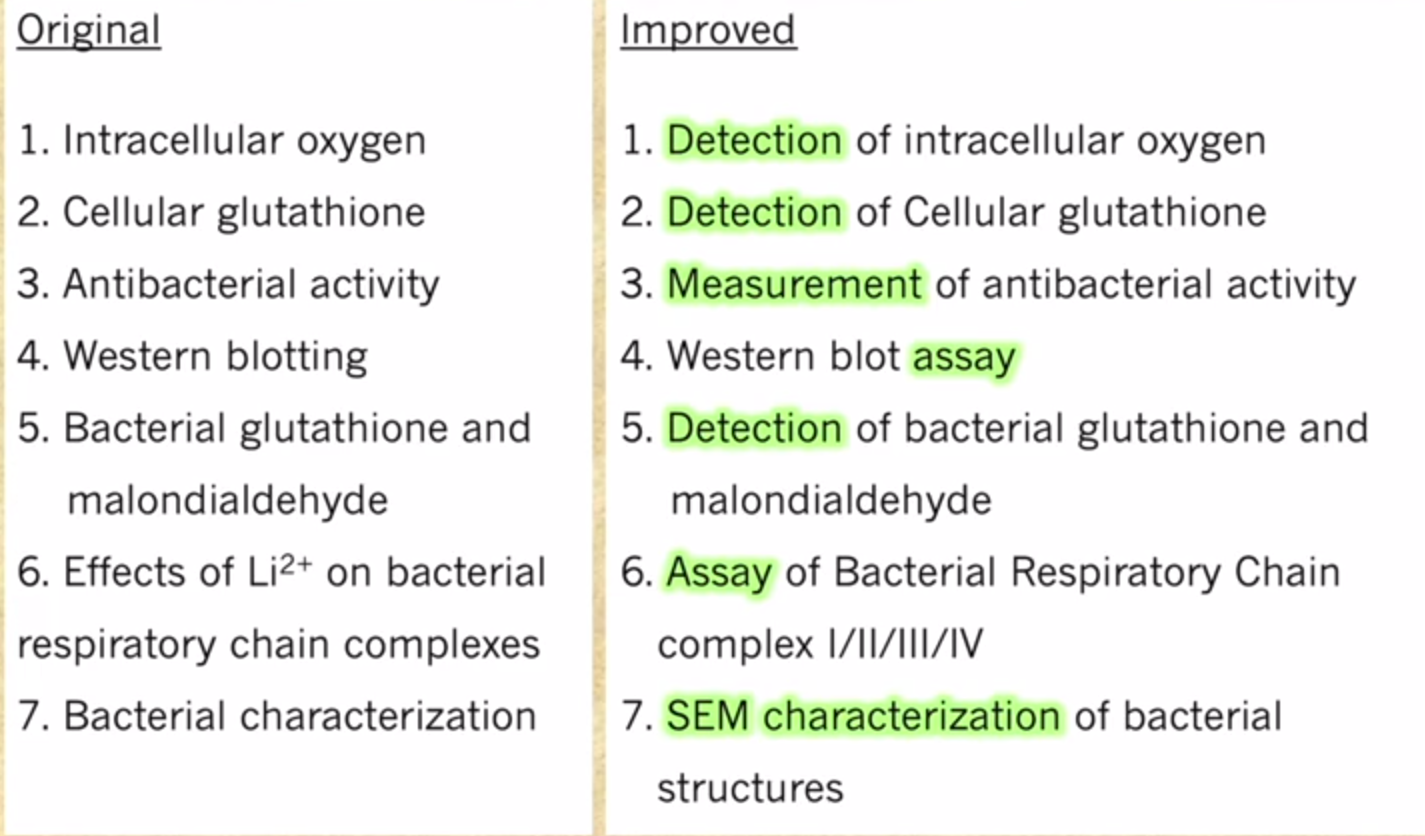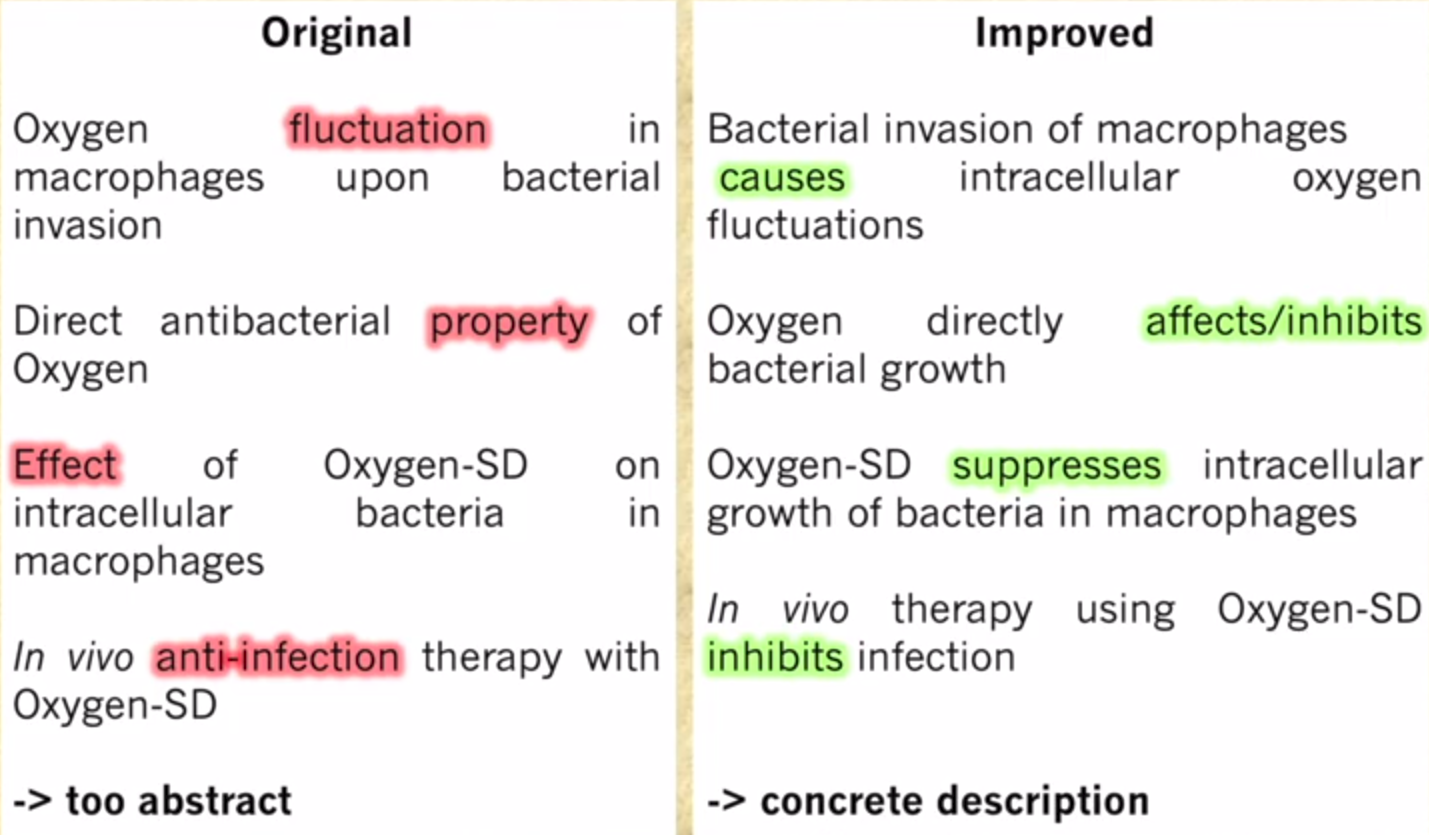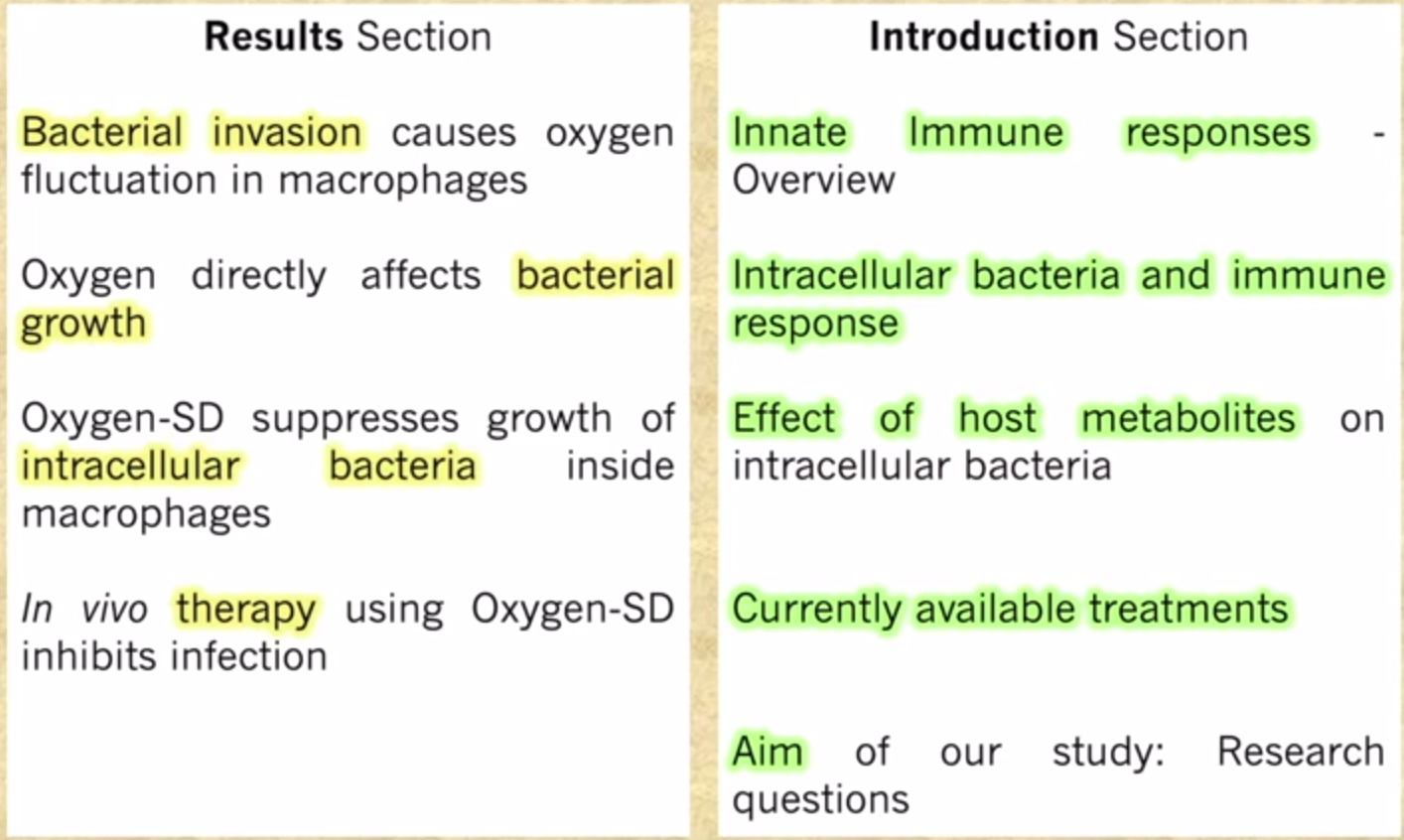1. 文章结构

- Abstract
- Keywords
- Introduction & Literature review
- Method
- Results / Findings
- Discussion & Conclusions
- Reference
1.1. Abstract
1.1.1. 特点
- A mini paper
- Purpose: for readers know your paper rapidly and thoroughly
- According to journals’ requites
- around 200 words
- Includes: reserch background, method, result and conclusions.
1.1.2. Abstract Nature Guidelines(7 parts)
- One or two sentences providing a basic introduction to the field,comparehensible a scientist any discipline.
- Two to three sentences of more detailed background,comprehensible to scientists in related disciplines.
- One sentence clearly stating the general problem being adressed by this particular study.
- One sentence summarizing the main result(with the words “here we show“ or other equivalent)
- Two or three sentences explaining what the main result reveals in direct comparison to what was thought to be the case previously,or how the main result adds to previous knowledge.
- One or two sentences to put the results into a more general context.
- Two or three sentences to provide a broader perspective,readily comprehensible to a scientist in any discipline,may be included in the first pargraph if the editor considers that the accessibility of the paper is significantly enhanced by their inclusion,Under thess circumstances, the length of the paragraph can be up to 300 words.(this example is 190 words without the final section,and 250 words with it).
1.1.3. Abstract needs to address 4 question
- Why did you do this study? -> Background(2)
- Where is the gap?How? -> Researh Question(+Method)(1-2)
- What did you find? -> Result(1-2)
- What do the findings mean? -> Evaluation(2)
1.2. Keywords
- Puspose: for readers search your paper rapidly.
- 3-5 words or phrase, separated by semicolons
- Theme,methods,key concepts,etc.
1.2.1. how to choice keywords?
- highly relevance-oriented
- target readers-oriented
2. 二级标题
2.1. 作用
- important for your readers
- 帮助读者在脑海中构建一个清晰的论文框架
- 用二级标题引领读者的阅读,抓住重点
- 为寻找特定信息的读者,提供一个快速的检索方式
- important for your reviewers
- 帮助审稿人快速掌握你的论文提要,并做出判断
- 让审稿人的反馈能更准确定位,促进对话
- 完整叙述链条:引言/综述 vs 研究发现/讨论
- important for yourself
- 构思草稿阶段:梳理自己脑海中的思路
- 落笔行文阶段: 紧扣重点,前后呼应,把我写作节奏
- 团队内:共同作者之间最重要的是在二级标题上先一致
2.2. 设计二级标题的原则
list types of methods used, NOT Topics

descripe results with action words(Verbs), NOT Nouns

Introduce topics RELEVENT to understand Results (Not necessarily)

Discuss your results in context of previous work

3. Logic and Flow
3.1. Logic: 常见的段落行文逻辑
3.1.1. General-to-specific and specific-to-general
3.1.1.1. General-to-specific
结构:
1 | graph TB |
General Statements
- Beginning of Abstracts
- start of Introduction section
- sometimes Disscussion section
Text: descriptive and explanatory
Writer: informed and organized
General Statements 作用:
- to “ease” your reader into you writing
- if too challenging,reader lost from the beginning
3.1.1.2. specific-to-general
结构:
1 | graph TB |
specific Statements
- End Abstract
- End of Discussion section
specific Statements 作用:
- to provide a link from a specific point to the bigger picture or context of your study
3.1.1.3. 总结
- G->S found in Introduction
- S->G found in Discussion
- both G->S and S->G found in Abstruct
3.1.2. Problem-Solution
3.1.2.1. Tenses
- Result Section
- active voice + past tense(We did)
- passive voice(被动语态) + past tense(As shown in Fig.1,…)
- Disucssion Section
- both active and passive voice
- past tense(Previous reports showed…) and
- present tense(On the basis of our results, we propose…)
3.1.3. Process Structure
first -> second …
3.1.4. Old-to-New Information Flow
从以往的研究或者人们熟知的研究开始撰写,过度到比较前沿的研究发现,进而引出自己的研究问题等等。这个写作逻辑,通常也会跟General to Specific逻辑混合或者结合使用.
3.2. flow: 使文章更流畅
3.2.1. linking words and phrases

3.2.2. Punctuation(标点符号)
Punctuation: full stops(.),comma(,),semicolon(;),colon(:)
3.2.3. Conjunction(连接词)
- Conjunction: and,but,or ;Use a comma
- Connector: however,thus,also… ;use a semicolon or period
- Subordinator: because,if,while… ; Use a comma
Problem:
Use ofconjunctions at the begining of a sentence
1
2
3BUT: in contract/howerve/Unexpectedly/Surprisingly
AND: in addition/also/Furthermore/Importantly
THOUGH: only use after comma as part of a clause(even though)using ‘and’ to connect unrelated facts

3.2.4. Repetition(重复)
- repeat of words is not a problem in academic writing
- (to the contrary),repeats improve clarity and precision
3.2.5. Time adverbials
once,first,next,then,finaly….
3.2.6. -ing clauses
e.g. Prices rise,thus leading to a decrease in demand
- emphasize cause and effect
- used in combination with ‘thus’(optional)
- render your statement more dynamic
- very common in academic writing
3.2.7. this/these + summary word
e.g. this situation has resulted in intense competition for admission.



